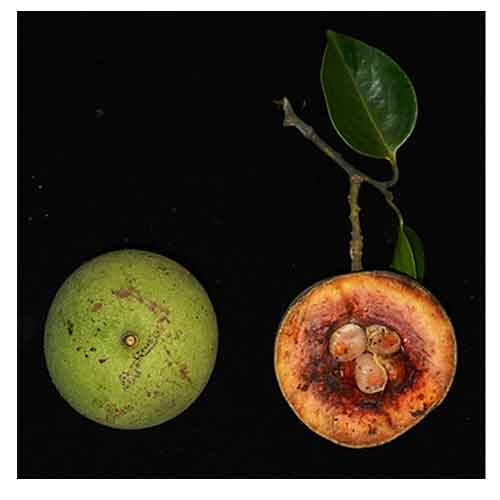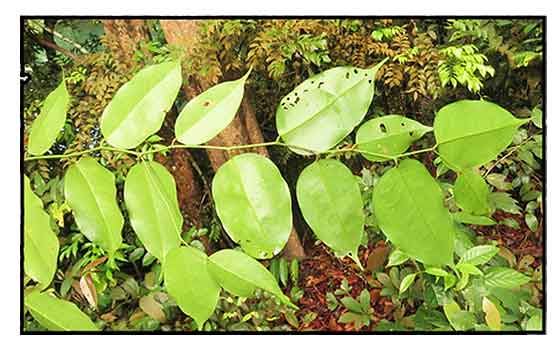
Family • Polygalaceae
Mararing
Xanthophyllum amoenum Chodat
| Scientific names | Common names |
| Xanthophyllum amoenum Chodat | Mararing (Tag.) |
| Xanthophyllum stipitatum var. amoenum (Chodat) de Wilde & Duyfjes | |
| Xanthophyllum stipitatum var. nitidum Chodat | |
| Xanthophyllum stipitatum var. pachyphyllum Chodat | |
| Xanthophyllum amoenum Chodat is a synonym of Xanthophyllum stipitatum var. pachyphyllum. | |
| Xanthophyllum stipitatum var. pachyphyllum. is an accepted species. KEW: Plants of the World Online | |
| Other vernacular names |
| BORNEO: Keranji, Lahal, Langir, Menyerin, Nyalin, Nyalin paya, Nyilin, Sianglam, Tampasak. |
| MALAYSIA: Buah langir, Mangok. |
| THAILAND: Plu. |
February 2023
![]()
 |
| Â Â Â Â Â Â Â Â Â Â Â Â Â Â Â Â Â Â Â Â Â Â Â Â Â PHOTOS / ILLUSTRATIONS |
| IMAGE SOURCE: Photograph: Xanthophyllum amoenum / fruit / © Reuben C J Lim / Creative Commons Attribution-NonCommercial-ShareAlike (CC BY-NC-SA 2.0 / non-commercial use / click on image to go to source page / flickr |
| OTHER IMAGE SOURCE: Photograph: Xanthophyllum amoenum / leaves / © Reuben C J Lim / Creative Commons Attribution-NonCommercial-ShareAlike (CC BY-NC-SA 2.0 / non-commercial use / click on image to go to source page / flickr |
Additional
Sources and Suggested Readings |
• |
DOI: It is not uncommon for links on studies/sources to change. Copying and pasting the information on the search window or using the DOI (if available) will often redirect to the new link page. (Citing and Using a (DOI) Digital Object Identifier) |
| Â Â Â Â Â Â Â Â Â Â Â Â Â Â Â Â Â Â Â Â Â Â Â Â Â Â Â Â Â Â List of Understudied Philippine Medicinal Plants |
• |
 |


 Distribution
Distribution